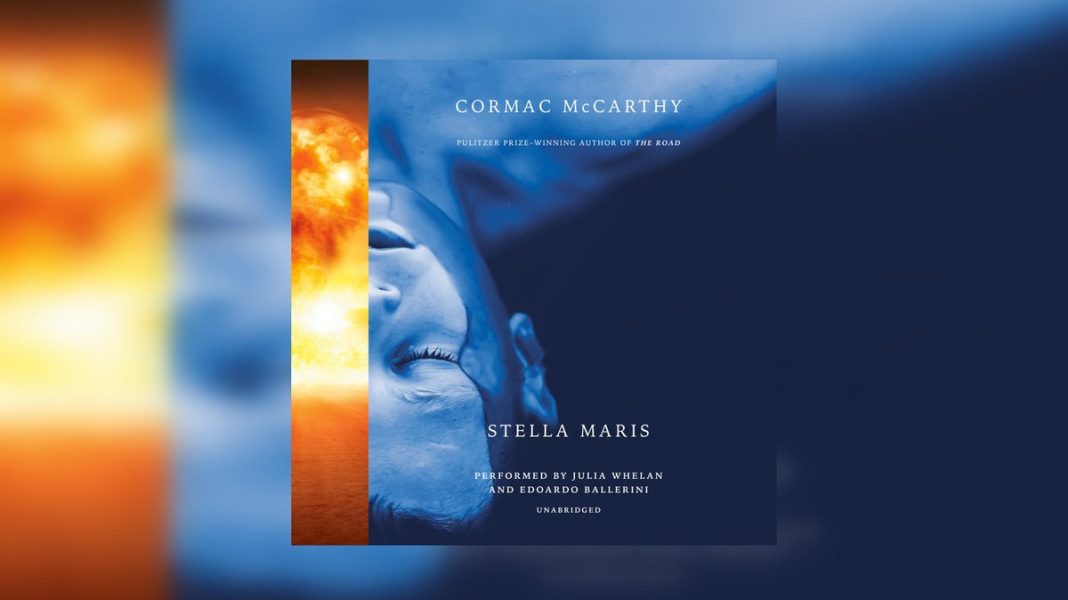Cormac McCarthy’s latest book can be very complex and difficult for people who are not familiar with the concepts that McCarthy is talking about. And there is not one concept but several. Chances are that many would get bored and give up because, when it comes to the plot, nothing much happens, let alone something interesting. Also, those who have not read “The Passenger” might have trouble understanding much about the protagonist in “Stella Maris” and her life. Let us go through the storyline and try to simplify it.
The Passenger, which came out in October 2022, portrays Robert (Bobby) Western, a professional diver who leads a lonely life. He has very few friends, but he never reveals himself wholly to anyone. John Sheddan, one of his very close friends since college, reveals to the readers that Bobby was a brilliant student studying physics at Caltech who dropped out of college to race cars and is also in love with his dead sister, Alicia. Alicia had committed suicide, and since then, Bobby’s life has never been the same. The Passenger gives a glimpse of the life of the brother-and-sister duo, but the details of it are narrated mostly in “Stella Maris,” which, though is said to be the companion novel, but it unfolds quite a few years earlier than the former.
Those who have read The Passenger would know a bit about Alicia Western, who is the protagonist in “Stella Maris.” Alicia Western (formerly known as Alice) is a brilliant mathematician pursuing her Ph.D. at the University of Chicago. Her research is on topos theory, and in spite of completing her dissertation, she didn’t submit it. Instead, she decided to give up on mathematics altogether. “Stella Maris” opens with Alicia admitting herself to a hospital named “Stella Maris” in Wisconsin. She arrived there with a plastic bag that contained a little more than $40,000 and refused to talk about her brother, Bobby Western. The novel begins with Alicia’s interaction with her shrink at the hospital. The doctor goes through her previous records to find that, though she has been diagnosed with paranoid schizophrenia, many doctors have stated that she is faking the illness. Dr. Robert Cohen begins the session by asking Alicia about herself and why she specifically admitted herself to this hospital because most people who are actually suffering from any form of mental illness do not usually admit themselves. Alicia appears to be quite a difficult patient who doesn’t answer questions just because she has to. She would only answer if Dr. Cohen answered hers. She is very aware of her own state of mind and surroundings and appears to be well-read in diverse subjects, making most of the things that she talks about difficult for the doctor to understand. She, in turn, asks the doctor for how long he has been in this profession and states very clearly that she doesn’t need therapy and just wants to chat with someone. The kind of resistance that she puts up is quite rare for a patient like her, who has been diagnosed with paranoid schizophrenia and has experienced years of visual and auditory hallucinations. Soon the conversation takes a completely different turn where she ends up talking about Rosemary Kennedy and where she was admitted, Grothedieck (a renowned French mathematician who is presented as her colleague here) and his current location, Satan, and Carl Jung’s theory. They also talk about the different tests that mental health professionals take to diagnose the patient’s illness, and it is revealed that she received a perfect score on one of the tests, after which she refused to take any more because she found them rather stupid. When coming to the subject of her hallucinations, Alicia tells Dr. Cohen about The Kid, whom she often sees along with other people, it appears to be a dwarf with fins but is no different than any other person. He appears to be very real, and most of the time, he uses metaphors and makes jokes that she is unable to understand. She doesn’t know the cause of the appearance of the Kid, but what she has realized is that when he doesn’t appear for long, she misses him.
The conversations revolve around several subjects, including the onset of her hallucinations, which she reveals to have been after her mother’s death when she was around 12. The doctor tries to find a specific cause for it, but Alicia dismisses the idea that there might be some sort of reason behind it. She describes how she had always been treated as a weird kid, and even before the hallucinations started, her family knew that something was wrong with her. She talks about her family in details: how her parents met, where her actual house had been, and her dreams of going to Romania and settling there with her brother. She wanted a new life with him and wanted to bear his children, but his unacceptance crushed all of her dreams.
Amongst all the things that they discussed, quite a few ideas stood out. Like the very interesting concept of babies crying not because they need something but because they are enraged, which later changes to grief and sorrow as they grow up. Also, the idea of language that McCarthy projects through Alicia’s thoughts and her conversations with the doctor is his own view regarding language. He talked about this in details in his essay The Kekule Problem (2017), where he explains why in dreams, we ‘see’ things and how they stand as symbols for a message that maybe our brain is trying to communicate to us. Alicia’s hallucinations serve the same purpose. Her hallucination of the figure of Miss Vivian makes her think about why children cry when they are hungry or thirsty, thereby exposing themselves to predators, which is unlike any other species.
Alicia also talks about her interests with Dr. Cohen. She talks about her interest in music and how music in itself is something that can exist independently of any other entity in the universe, thereby echoing Schopenhauer himself. McCarthy glosses over some critical historical moments as well, like the aftermath of the Second World War and the building up of the Manhattan Project and its consequences later on.
There are so many things that McCarthy has his protagonist say, and all of this is a result of all the knowledge that he has gained while spending much of his time at the Santa Fe Research Institute Mexico. The 89-year-old novelist makes sure that he is able to pass on to his readers all this wealth while reminding them that there are so many things that humans as a species are yet to discover and learn when it comes to the human mind and the universe.
See more: ‘The Passenger’ Book Summary And Ending, Explained: What Happens To Bobby Western?


